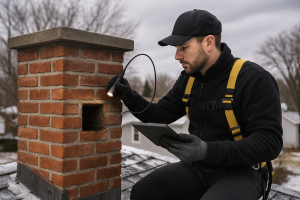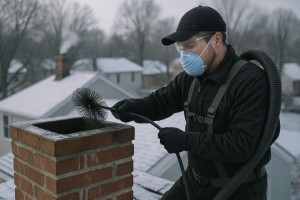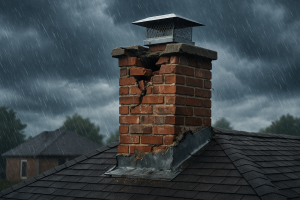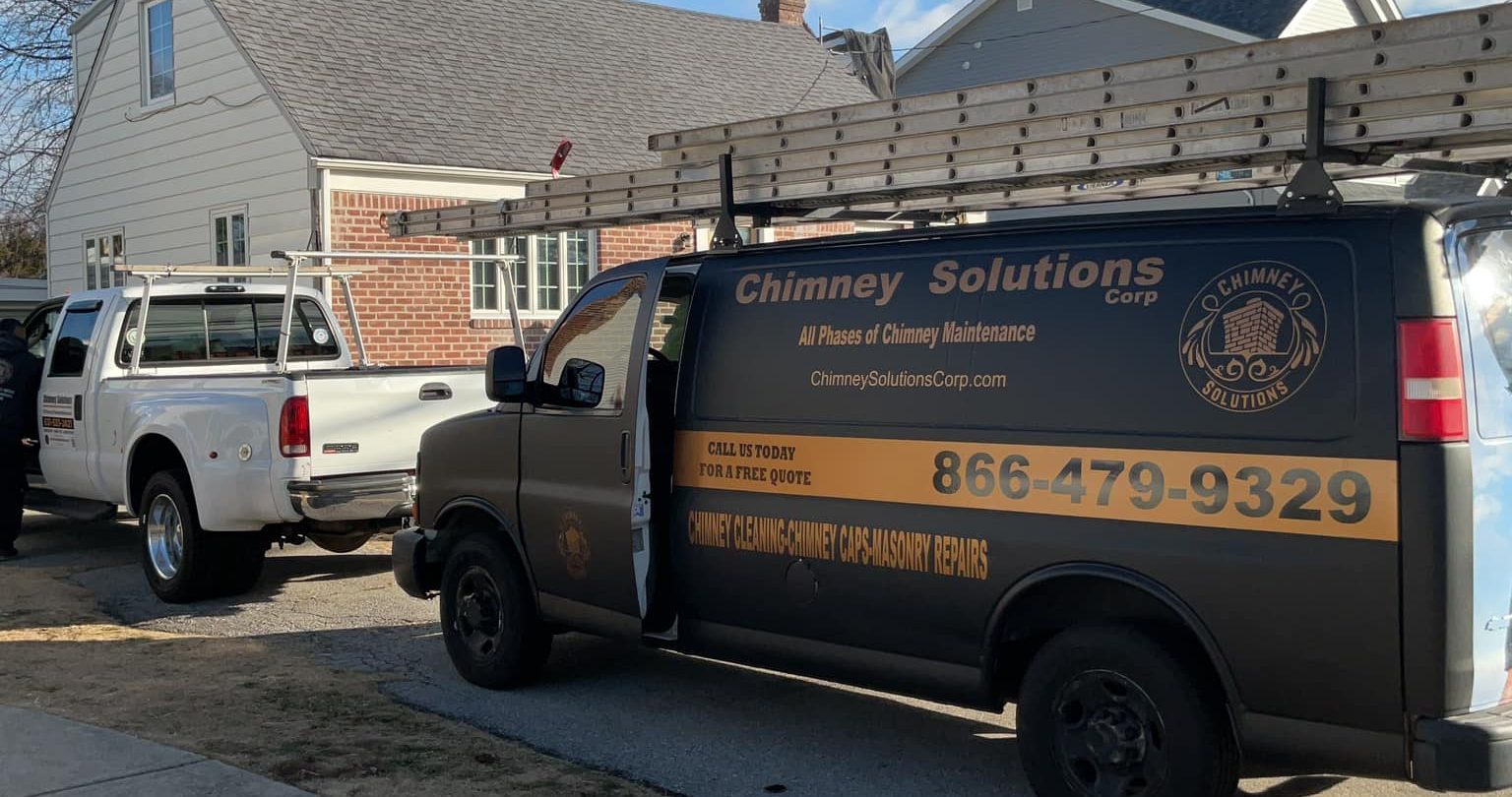Fixing Common Chimney Masonry Issues: A Homeowner’s Guide
Chimney masonry issues are a common concern for homeowners, especially those with older homes or wood-burning fireplaces. Over time, exposure to the elements and the natural aging process can cause various problems that, if left unchecked, can lead to significant damage and safety hazards. At Chimney Solutions Corp, we understand the importance of maintaining the structural integrity and functionality of your chimney system. This guide covers the most common chimney masonry issues and how they can be fixed to keep your chimney in top condition.
1. Spalling and Flaking Brickwork
One of the most common masonry issues in chimneys is spalling, where bricks start to flake, chip, or crumble. This problem typically occurs due to water penetration. When water enters the brickwork, it can freeze and expand during cold weather, causing the bricks to break apart. This not only affects the aesthetic appeal of the chimney but also compromises its structural integrity.
Fix: The best way to address spalling is through tuckpointing, a process that involves removing the damaged mortar and replacing it with new mortar that matches the existing brickwork. Additionally, applying a waterproofing sealant to the exterior can prevent further water damage.
2. Cracked Chimney Crown
The chimney crown, located at the top of your chimney, serves as a protective barrier that prevents water from entering the chimney system. However, over time, the crown can develop cracks due to weather exposure or natural wear and tear. A cracked chimney crown can lead to serious water damage, including efflorescence (white stains) and the deterioration of the chimney structure.
Fix: Minor cracks in the chimney crown can be sealed with a waterproofing sealant, but more extensive damage may require a complete crown rebuild. Chimney Solutions Corp offers expert crown repair services to restore the crown’s functionality and protect the entire chimney system.
3. Damaged Mortar Joints
Mortar joints hold the bricks of a masonry chimney together, but they can deteriorate over time due to weather conditions, the freeze-thaw cycle, and age. Damaged mortar joints can lead to loose or missing bricks, which can cause the chimney to lean or collapse.
Fix: Repointing, or the process of renewing the mortar between the bricks, is the most effective way to fix damaged mortar joints. This process not only restores the appearance of the chimney but also reinforces its structural integrity.
4. Chimney Leaks and Water Damage
Water damage is one of the most common chimney issues, leading to problems like spalling, efflorescence, and rusting of metal components like the damper and chimney cap. Water can enter the chimney through cracks in the crown, damaged flashing, or porous brickwork.
Fix: Addressing chimney leaks involves identifying the source of the water entry. Repairing the chimney flashing, sealing cracks in the crown, and applying a waterproofing sealant to the brickwork are all effective solutions. Regular chimney inspections can also help detect and prevent water damage before it becomes a major issue.
5. Creosote Buildup and Chimney Fires
Creosote is a byproduct of burning wood in a fireplace. Over time, it can build up inside the chimney flue, creating a highly flammable substance that can lead to chimney fires. Creosote buildup also restricts the airflow, leading to blockages and potentially dangerous levels of carbon monoxide in the home.
Fix: Regular chimney cleaning by a professional chimney sweep is essential to remove creosote buildup and prevent chimney fires. Chimney Solutions Corp recommends annual chimney inspections and cleanings to ensure the safe operation of your fireplace and chimney system.
6. Cracked or Damaged Flue Liner
The flue liner plays a crucial role in venting smoke and gases out of the chimney while protecting the chimney walls from heat and corrosion. Over time, the flue liner can crack or deteriorate, compromising its effectiveness and increasing the risk of a chimney fire.
Fix: Depending on the extent of the damage, a flue liner can either be repaired or replaced. Stainless steel liners are a popular choice for replacement due to their durability and resistance to corrosion.
7. Blockages and Obstructions
Blockages in the chimney flue can be caused by a variety of factors, including animal nests, debris, and creosote buildup. These obstructions can prevent proper venting, leading to dangerous conditions such as carbon monoxide buildup or house fires.
Fix: A professional chimney sweep can remove any blockages and inspect the flue for any signs of damage. Installing a chimney cap can also prevent animals and debris from entering the chimney in the future.
8. Leaning Chimney
A leaning chimney is a serious structural issue that can indicate problems with the foundation or severe damage to the chimney structure. This condition not only poses a safety risk but also can lead to further damage to the home if not addressed promptly.
Fix: Repairing a leaning chimney often involves rebuilding part or all of the chimney to restore its stability. Chimney Solutions Corp has the expertise to assess the situation and recommend the best course of action, whether it’s reinforcing the foundation or reconstructing the chimney.
9. Efflorescence and White Stains
Efflorescence, or white stains on the surface of the bricks, is a sign of moisture problems within the chimney. It occurs when water evaporates and leaves behind salt deposits on the brick surface. While it may not be immediately harmful, it indicates underlying water issues that could lead to more severe masonry damage.
Fix: To remove efflorescence, the chimney should be cleaned with a specialized solution, and the source of the moisture must be addressed to prevent recurrence. Waterproofing the chimney and repairing any cracks or leaks are essential steps in resolving this issue.
10. Damaged Bricks and Masonry
Bricks and masonry can become damaged over time due to exposure to the elements, age, and other factors. Cracked or crumbling bricks can weaken the chimney structure and lead to more significant problems if not repaired.
Fix: Damaged bricks should be replaced, and any masonry damage should be repaired by professionals. Repointing the mortar joints and applying a waterproofing sealant can also help extend the life of the chimney.
Conclusion: The Importance of Regular Chimney Maintenance
Maintaining the structural integrity and functionality of your chimney requires regular inspections, timely repairs, and ongoing maintenance. At Chimney Solutions Corp, we offer comprehensive chimney services, including inspections, cleaning, and masonry repairs, to keep your chimney in good condition and ensure the safety of your home.
By addressing common chimney masonry issues promptly, homeowners can prevent further damage, reduce the risk of chimney fires, and extend the life of their chimney systems. Contact Chimney Solutions Corp today to schedule an inspection and learn more about how we can help protect your home.



